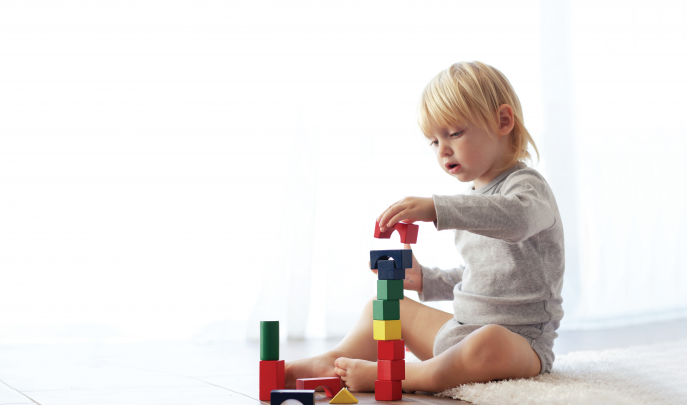Skilled Practitioners Roll With The Tantrums When Nurturing The Terrible Twos

It can be a frustrating task, but if you manage to ride the wave of a toddler's emotions in this key developmental stage you will help their charges flourish

- by Kathy Brodie

Supporting the development of children between the ages of two and three years is a fascinating experience – though it can also be a frustrating one! This is the age at which children are starting to realise that they can have an effect on their own environment and influence the world around them.
They are also able to move with confidence and communicate some of their thoughts to others verbally.
Their emotional development during this period is an explosion of new, and sometimes contradictory, feelings. This is a time when physical and emotional boundaries are tested, and individuals’ personalities start to become evident. When you are caring for children of this age, it is necessary to have patience, and to communicate consistent messages to those in your care.
If you do this, you will be able to help them to flourish in your setting.
1 Setting boundaries
At this age children need to know what the rules are. The rules that you have in your setting, written down or not, should be explained clearly and regularly.
This is not to reprimand children but to remind them.
They will need multiple reinforcements about what is expected from them. Similarly, adults need to be clear about their intentions and explain the behaviour they would like to see, rather than using ‘don’t’ all the time. For example, “Please could you walk in the room?” rather than “Don’t run!”
2 Expressing emotions
You need to give children mechanisms to help process the explosion of emotions they are experiencing. This may involve modelling the appropriate language to describe how they are feeling (“I’m sometimes shy, too”).
Providing a continuum of faces, from angry to very happy, and asking children which face they identify most closely with can also help identify how they are feeling.
3 Expanding language
By this point, most children will be able to make themselves understood verbally by most adults.
However, children still need extra time as they explore the complexities of whole sentences, syntax, grammar and so on.
It’s vitally important for language development and self-esteem that you wait and listen to children. Rushing their thinking will only cause frustration and upset, and may even discourage them from making an attempt to talk to you at a later date.
4 Stay consistent
Take time to explain to parents how and why you are doing certain things, such a potty training or responding to certain behaviour.
Even though children are usually able to differentiate between different circumstances (they know what they can ‘get away with’ at Grandma’s house but not home!), it makes life a lot less confusing for them if you can be consistent between home and setting(s).
5 Learning independence
As children are still mastering control of their bodies, there may still be accidents.
Children will need very different amounts of practice and support before they are proficient at anything, including toilet training, washing hands, dressing themselves or using a toothbrush.
You should be guided by your children as to how long they will need before they can be considered independent.
6 Sense of self
Between the ages of two and three, children lay down the foundations for how they see themselves and others see them.
They become aware of theory of mind, and that others may have different opinions and feelings. You need to be sensitive to this and explain both sides of a conflict, for example.
You can show that you think about the children when they aren’t there by asking about their activities outside of the setting – this helps children understand that others have independent thoughts and perspectives.
7 New moves
Children are now mobile, so the next developmental stage is to help them manoeuvre and control their own bodies in a variety of ways.
For gross motor skills, you can have games and opportunities for children to stop with control, for example, musical statues, and times to move in different ways, such as hopping or skipping.
For fine motor skills, encourage them to become aware of their own fingers and toes – for example, doing ‘Twinkle, Twinkle, Little Star’ with alternative hands.
RISKY PLAY
Once they can move confidently, children often start taking more risks, such as climbing very high. This is a good time to discuss hazards in a calm way.
• Children need to take some risks to stretch their abilities, but your approach to risk-taking should be controlled, for example, “Climbing the tree is allowed, as long as an adult is present.”
• When discussing risk, be careful not to scare children; they should still be motivated to make the most of opportunities, in a sensible way.
• Don’t try to eliminate risk altogether – children will just seek it by themselves, elsewhere, for example, climbing the bookshelf when you’re not looking…
Kathy Brodie is author of Observations, Assessments and Planning: Bringing it all together, published by Open University Press. For more information, visit kathybrodie.com











